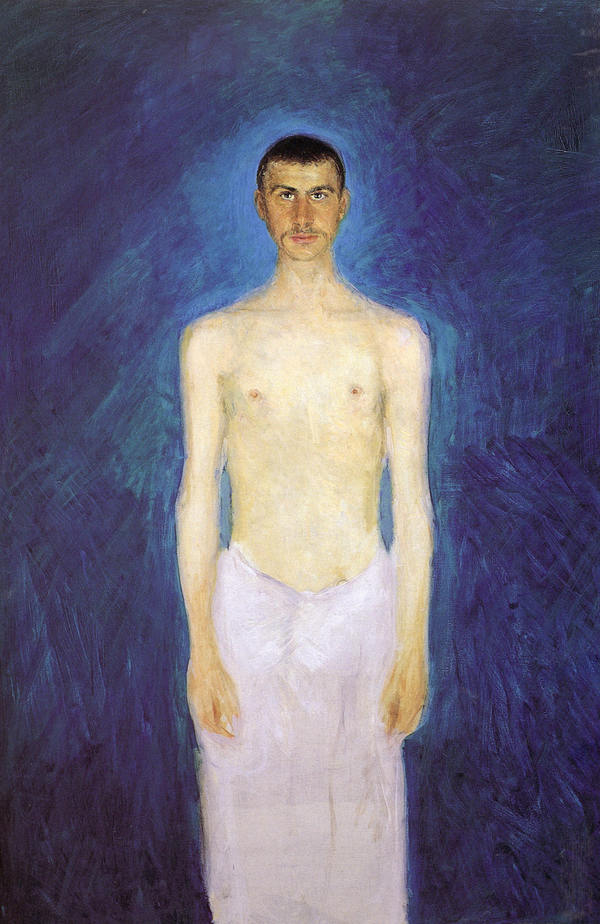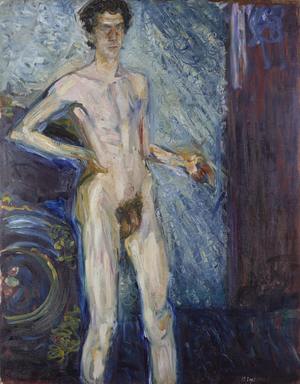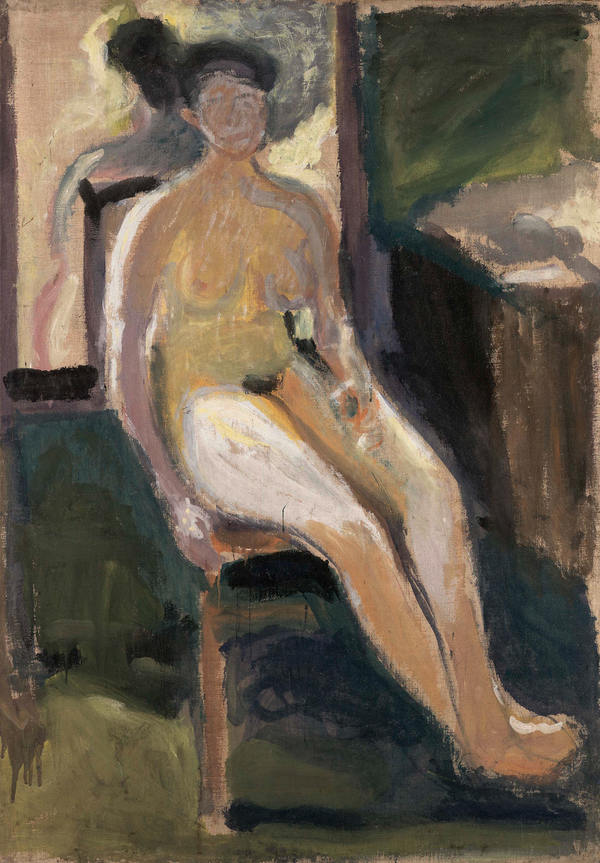February 24 to May 14, 2017
He is the “first Austrian Expressionist,” and for many still an insiders’ tip: the painter Richard Gerstl (1883–1908). He only lived to be 25 years old and yet he is mentioned in the same breath as the great masters of Viennese Modernism: Gustav Klimt, Egon Schiele, and Oskar Kokoschka. During his brief life Gerstl created an exciting and unusual, though relatively limited oeuvre with impressive highlights and pioneering innovations.
From February 24 to May 14, 2017, the Schirn Kunsthalle Frankfurt will be presenting the first retrospective of Richard Gerstl’s work in Germany. His painting reflects his concern with the contradictions of modern art. He was a rebel whose paintings opposed the Vienna Secession in terms of both style and content; he rejected their concept of beauty and committed himself to an aesthetic of ugliness. Gerstl loved to provoke and painted against the traditional rules in the conviction that he was treading “completely new paths” in art. He created merciless, confident paintings that do not adhere to earlier models and remain unique to this day. His oeuvre is that of a seeker who anticipated much of what was later articulated by other artists, for example in the paintings of Abstract Expressionism during the 1950s.
The portrait, especially the self-portrait, nudes, and landscapes are Gerstl’s preferred genres. The exhibition at the Schirn presents, for example, two of his self-portraits: the earliest one,
Richard Gerstl, Semi-Nude Self-Portrait, 1902/04, Oil on canvas, 159 x 109 cm, © Leopold Museum, Vienna
"Semi-Nude Self-Portrait (Selbstbildnis als Halbakt)" from 1902/04,
and his last, "Nude Self-Portrait (Selbstbildnis als Akt)" from 1908.
Richard Gerstl, Nude Self-Portrait, September 12, 1908, Oil on Canvas, 139,3 x 100 cm, © Leopold Museum, Vienna
Besides portraits such as
Richard Gerstl, The Sisters Karoline and Pauline Fey, March / April 1905, Oil on canvas, 175 x 150 cm, Belvedere, Vienna
"The Sisters Karoline and Pauline Fey (Die Schwestern Karoline und Pauline Fey)" (March/April 1905)
Richard Gerstl, Portrait of Henryka Cohn, June 1908, Oil on canvas, 147,9 x 111,9 cm, © Leopold Museum, Vienna
and "Portrait of Henryka Cohn II (Bildnis Henryka Cohn II)" (summer 1908),
The exhibition also features the numerous likenesses of Mathilde Schönberg, such as
"Mother and Daughter (Mutter und Tochter)" (late 1906)
Richard Gerstl, Seated Female Nude, Fall 1908, Tempera on canvas, 166 x 116 cm © Leopold Museum, Vienna
and "Seated Female Nude (Sitzender weiblicher Akt)" (fall 1908),
as well as portraits of friends and students of the composer Arnold Schönberg,
Gerstl’s painting "The Schönberg Family (Die Familie Schönberg)"
Richard Gerstl, The Schönberg Family, late July 1908, Oil on canvas, 88,8 x 109,7 cm, Museum moderner Kunst Stiftung Ludwig Wien
Richard Gerstl, Group Portrait with Schönberg, late July 1908, Oil on canvas, 169 x 110 cm, Kunsthaus Zug, Stiftung Sammlung Kamm, Photo: Kunsthaus Zug / Alfred Frommenwiler
and especially the "Group Portrait with Schönberg (Gruppenbildnis mit Schönberg)" (both late July 1908) constitute a highlight of the exhibition.
More images:
Richard Gerstl, Portrait of Alexander von Zemlinsky, July 1908, Oil on canvas, 170,5 x 74,3 cm, Kunsthaus Zug, Stiftung Sammlung Kamm, Photo: Kunsthaus Zug / Alfred Frommenwiler
Richard Gerstl, Laughing Self-Portrait, Summer/Fall 1907, Oil on canvas, 40 x 30,5 cm, Belvedere, Vienna
Richard Gerstl, Couple in a Field, July 1908, Oil on canvas, 111,2 x 90,7 cm © Leopold Museum, Vienna
Richard Gerstl, Mathilde Schönberg in the Garden, July 1908, Oil on canvas, 171 x 61 cm © Leopold Museum, Vienna
Richard Gerstl, Portrait of Mathilde Schönberg in the Studio, Spring 1908, Oil and mixed media on canvas, 171 x 60 cm, Kunsthaus Zug, Stiftung Sammlung Kamm, Photo: Kunsthaus Zug / Alfred Frommenwiler
Richard Gerstl, Grinzing, Spring 1906, Oil on canvas, 29,7 x 40,2 cm, Private collection, Courtesy Galerie St. Etienne, New York
The Schirn has assembled no fewer than 53 of the 60 surviving works by Richard Gerstl, including loans from leading Austrian museums such as the Leopold Museum, the Galerie Belvedere, MUMOK, the Wien Museum, the Albertina, the Oberösterreichisches Landesmuseum Linz, and the Museum der Moderne in Salzburg.
A large number also come from the Neue Galerie in New York, and further works from important private collections in Europe and the United States. A scholarly publication will accompany the exhibition that will include—for the first time since 1993—an updated catalogue raisonné.












